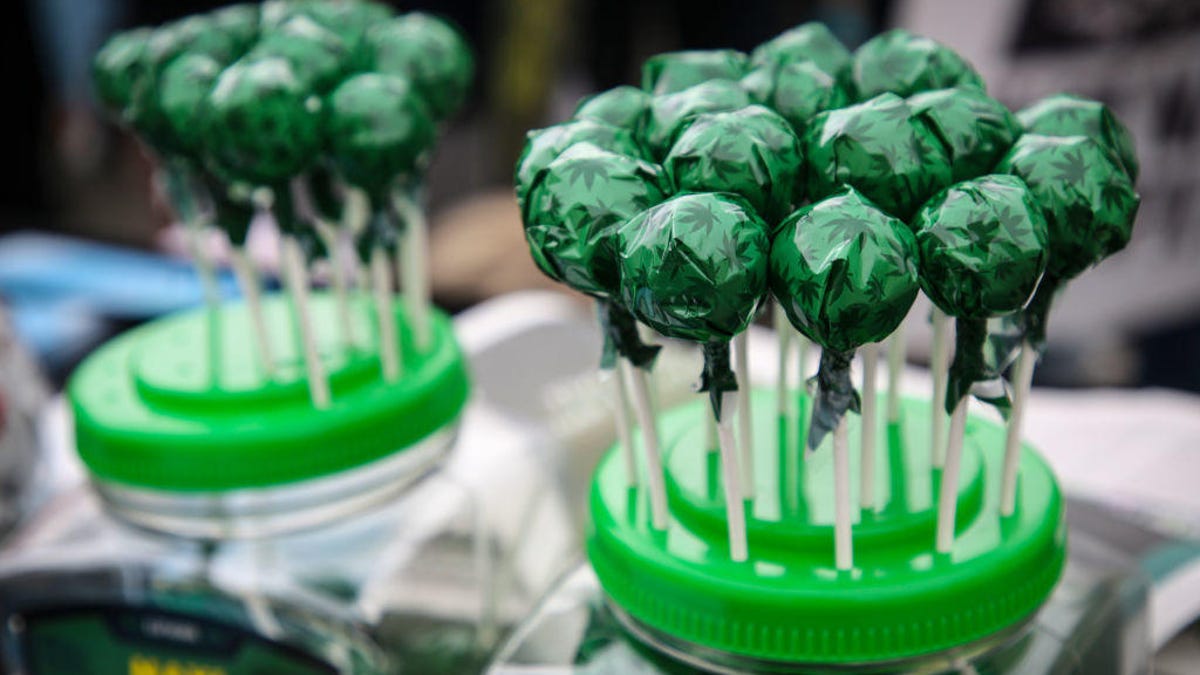Edibles vs. topicals vs. vaping vs. oils: CBD products, explained
A guide to the most common CBD products and how they affect the body.

CBD products come in all forms.
You're not imagining it -- CBD is everywhere. After the Agriculture Improvement Act of 2018 legalized hemp-derived cannabidiol, products with it have flooded the market. Burgers, coffee, cartridges, pet shampoo -- you name it and there's probably a version that contains CBD.
This story discusses substances that are legal in some places but not in others and is for informational purposes only and not for the purpose of providing legal advice. You shouldn't do things that are illegal -- this story does not endorse or encourage illegal drug use.
The sheer variety of CBD products can be overwhelming -- especially considering they all interact with and affect the body in different ways -- but the abundance can also be a good thing.
"Medical cannabis users can kind of mix and match what they use in ways that can potentially be similar to the medication a physician would give them, says Kevin Boehnke, Ph.D., research investigator in the department of anesthesiology and the Chronic Pain and Fatigue Research Center at the University of Michigan. For example, when it comes to pain management -- the top medical use for CBD -- a fast-acting form of cannabis (like vaping) and a slower-acting form (like edibles) could potentially be used analogously to fast-acting and extended-release pain relievers.
Research into the potential health effects of CBD, as well as optimal doses for specific conditions, is still preliminary but there are a few things we know about the different delivery methods.
Read more: CBD-infused activewear doesn't have science on its side -- yet
Edibles (including pills and capsules)
CBD is available in many edible forms, including beverages, chocolate and these gumdrop candies.
This class of CBD products includes anything ingestible -- from drinks to candy to capsules.
Pros: With such a large variety of edible CBD products available, people may have an easier time finding something that fits their preferences. For example, food products, like chocolate, gummies and granola bars, may have an earthy flavor that some may find unappealing but pills and capsules tend to be tasteless.
Packaged edibles can also make it easier to take a specific dose (though checking a product's certificate of analysis is the best way to confirm it contains the type and amount of ingredients listed on the package).
Cons: Absorption can be slow, erratic and variable, according to research. "If you eat an edible, it actually takes a while to hit the bloodstream because it has to be digested and metabolized by the liver," says Boehnke. "So it takes a while to take effect but then that lasts a lot longer and tapers more slowly."
And things like how much food someone has recently eaten can affect how much CBD is absorbed by the body, which is usually around 20%-30%. Peak bloodstream levels are usually achieved within one to two hours, though it can take up to six. That variability makes edibles the least predictable methods of using CBD.
Vaporizers
Many brands offer vaporizers with CBD.
Similar to e-cigarettes, vaporizers heat up dry cannabis flower or CBD oils, creating an inhalable vapor.
Pros: Vaping is the fastest way to potentially feel results. Peak bloodstream levels occur around 10 minutes but most people can start feeling the effects within a few minutes of the first inhalation and the effects can stick around for three to five hours.
"When you vape or smoke, it quickly hits the bloodstream, so there is a quick effect onset that tapers off more quickly than edibles," says Boehnke.
Cons: Like edibles, a variety of factors, such as how deeply someone inhales, how long they hold their breath, and how hot a vaporizer runs can affect CBD absorption, which can vary from 10%-60%. Dosing can also be difficult, although prefilled pens that meter out doses help to consistently zero in on the right amount.
Lastly, vape cartridges can contain propylene glycol, a liquid alcohol that's also found in e-cigarettes and can break down into formaldehyde, a probable carcinogen, at high temperatures. There are "solvent-free" oils on the market that don't use propylene glycol, and come with a certificate of analysis detailing what chemicals are present.
Oils and tinctures
The CBD in these products are usually extracted from hemp and then diluted with an oil, often sesame. The resulting oil or tincture is then typically placed under the tongue using a dropper or sprayed on the inside the cheek, where it's absorbed directly into the bloodstream.
Pros: After vaping, oils and tinctures are the second-fastest way to feel the effects of CBD -- usually within 30 minutes. Unless it's added to food or immediately swallowed, in which case it will have to be processed by the liver first.
Cons: Depending on the product, dosing can be tricky. Labeled droppers can be a big help, as can shaking the bottle well before use because CBD can get stuck to the side of the container.
Topicals
Marijuana bubble bath and body lotion is seen for sale at the Higher Path medical marijuana dispensary in California's San Fernando Valley.
Topicals include lotions and balms that are rubbed directly onto the skin, as well as transdermal patches that stick to the skin and gradually release CBD into the bloodstream over a prolonged period of time.
Pros: Topicals can be as effective as oral delivery methods. Lotions work more locally, making them a great option for things like arthritis and menstrual cramps, whereas transdermal patches will have a more wide-reaching effect.
Cons: Topicals generally need to contain higher amounts of active ingredients, like CBD, to be effective, which can drive up the price. There's also the risk of skin irritation. The time required to take effect can vary.

